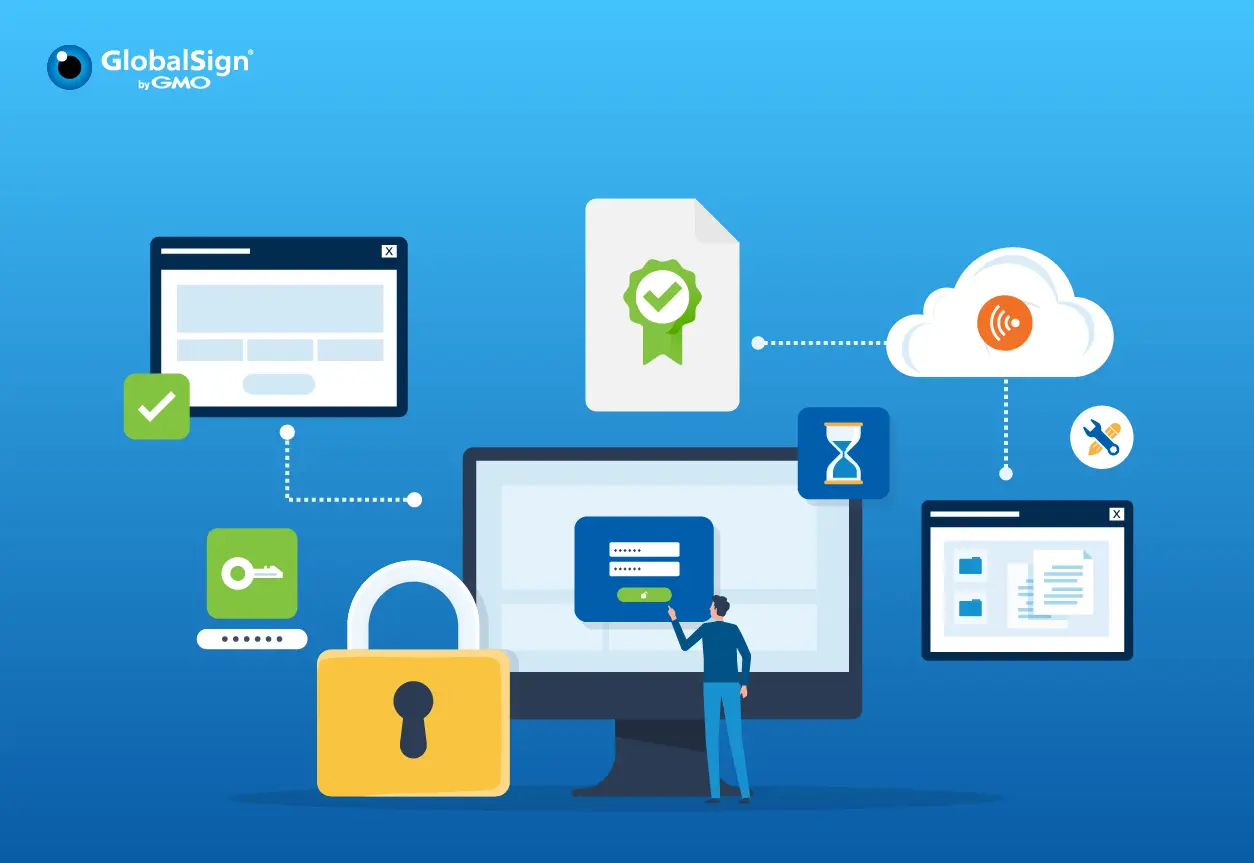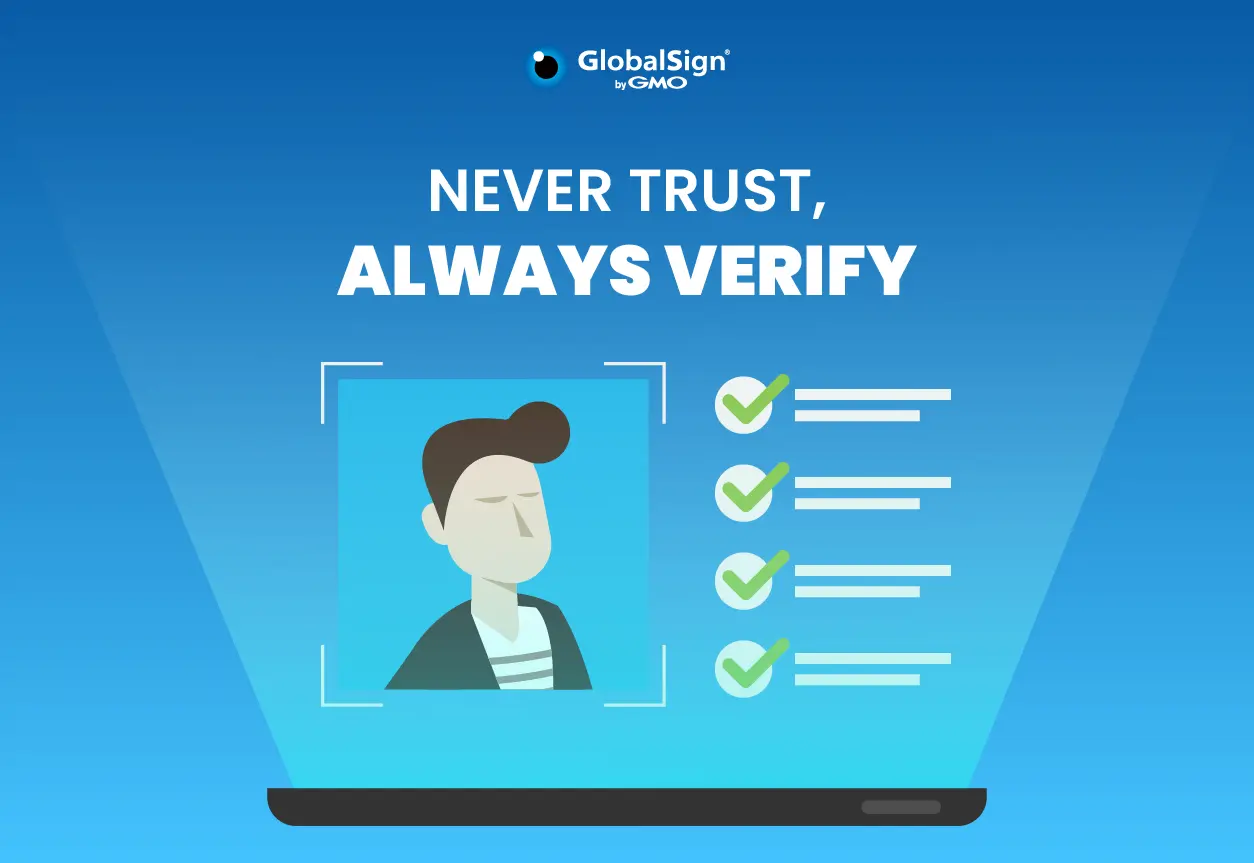The Zero Trust security model, pivotal in modern cybersecurity, operates on the principle "never trust, always verify."
Unlike traditional security paradigms that assume everything inside a network is safe, Zero Trust treats all users and devices, both inside and outside the network, as potential threats. This approach requires strict identity verification, continuous monitoring, and least privilege access control for every access request, regardless of the user's location.
Its increasing relevance stems from the growing sophistication of cyber threats and the shift towards hybrid work and cloud computing, necessitating more robust and adaptive security measures in today's interconnected digital environment.
Certificate Authorities (CAs) play a pivotal role in a Zero Trust environment, and in this blog, we’ll explore this role in detail and highlight the importance of PKI (Public Key Infrastructure) in achieving Zero Trust.
Fundamentals of Zero Trust Security and Certificate Authorities
Zero Trust Security is a security principle that’s built on the concept of trusting no one.
In a Zero Trust environment, all users are required to authenticate their identity when they attempt a connection request to your organisation’s network, regardless of whether they’re internal or external users.
Zero Trust also applies to devices, not just individuals. All devices that are registered on the company’s network are assumed to be suspicious, and thus, can’t be trusted until their identities are verified.
The Zero Trust framework operates on the following three fundamental principles:
-
Continuous Verification: Authenticate all users consistently, considering factors like identity, device, location, and other relevant identifiers.
-
Restricted Access: Grant access to resources for both internal and external users strictly based on their roles, or the specific information required for their job functions.
-
Breach Preparedness: Operate under the constant assumption of an imminent breach, focusing on continuous threat detection and the mitigation of security vulnerabilities.
Never Trust, Always Verify: The Role of Certificate Authorities
Adopting the Zero Trust security model is heavily dependent on identity verification, and that’s where the role of publicly trusted Certificate Authorities becomes important. Certificate Authorities are the bodies responsible for validating user and organisation identities and issuing digital identity certificates that utilise advanced encryption algorithms, including root certificates and intermediate certificates. By binding all users and devices on your network to cryptographic certificates, collaborating with a certification authority can help you secure digital communications and transactions, as well as control information access and prevent unauthorised users from stealing or destroying sensitive data.
Reliable identity verification with Public Key Infrastructure (PKI) is important for implementing a Zero-Trust security model. PKI provides verified digital identities from your entire organisation. It serves as an integral part of a Zero Trust initiative in terms of encryption, authentication, and integrity.
With PKI, you can verify user identities, encrypt internal and external communications, and ensure system and data integrity. It also facilitates certificate management with automated issuance, revocation, and replacement of certificates.
Certificate Authorities and the Principle of Least Privilege (PoLP)
The Principle of Least Privilege (PoLP) is a security strategy that restricts each user's access rights to only what is strictly necessary for their job role. This approach is crucial in mitigating risks associated with cyber threats and maintaining robust security protocols.
When applied in conjunction with digital certificates, PoLP takes on an even more significant role — by integrating the PoLP, Certificate Authorities ensure that these digital certificates grant access rights that are precisely tailored to each user's role and requirements.
This approach to access control is vital in safeguarding sensitive information and systems. It effectively limits the potential damage that could be inflicted by a compromised account. If an attacker gains access to a user's credentials, the restrictions imposed by PoLP minimize the attacker's ability to navigate freely across the network and access critical resources.
Moreover, enforcing PoLP can streamline your security management by simplifying the process of monitoring and auditing, as the scope of each user's access is clearly defined and limited. This makes it easier to track and rectify any unusual activity, thereby enhancing the overall security posture of your organisation.
Enhancing Zero Trust with Certificate Authorities
Within the Zero Trust model, Certificate Authorities (CAs) play a pivotal role in establishing and maintaining secure digital identities.
The Importance of Strong Authentication
Strong authentication is a cornerstone of the Zero Trust security model. It demands more than just a username and password; it requires verification that is far more difficult for attackers to compromise. This is where digital certificates issued by Certificate Authorities become crucial. They provide a form of authentication that is not only robust but also scalable across large organisations.
Certificates can be used to authenticate various entities including users, devices, and even software processes, thus creating a more comprehensive security environment.
Certificates as a Means of Multi-Factor Authentication
Multi-factor Authentication (MFA) encompasses requiring more than just a password to authorise users and grant them access to data. It adds an additional layer of security to prevent data breaches. Digital certificates may be utilised as a means of multi-factor authentication. For instance, you could require users to submit their unique digital certificate, along with a PIN or password, hence, providing two factors for login.
Certificate Authorities and Micro-segmentation: A Zero Trust Approach
In the past, companies operated on a "flat network" model that provided full network access to all company resources. However, despite the efficiency of such an approach, it’s proven to be insecure.
Securing Network Segments with Certificates
Today, to enhance security, many organisations are adopting a more compartmentalised approach. This involves dividing their company network into smaller, distinct segments or zones, effectively creating a series of controlled environments to limit the potential damage from unauthorised access. This way, it becomes possible to protect sensitive information from unauthorised individuals and applications.
Key to the micro-segmentation strategy are Certificate Authorities (CAs). CAs issue digital certificates that verify the identities of users and devices, contributing to enforcing and maintaining micro-segmentation policies. Through identity verification, CAs play an essential role in ensuring that only authorised entities can access certain network segments, thus significantly elevating security measures and preventing unauthorised intrusions in these segmented areas.
Dynamic Access Control with Certificate Authorities
Dynamic Access Control (DAC) is also utilised alongside network micro-segmentation. DAC adjusts access permissions in real time, providing much-needed flexibility to your network security approach. These adjustments take factors like the user's identity, the type of device being used, the user's location, and the prevailing network conditions into consideration, thereby enhancing access security and data protection. CAs play a vital role in DAC as they authenticate users and devices through digital certificates, enhancing the system's ability to finely tune network access. Controlling access privileges via digital certificates enables a more sophisticated and adaptable security structure, which is particularly effective in complex and constantly changing network environments.

Continuous Monitoring and Certificate Authorities: Staying Vigilant
Certificate Authorities (CAs) play a crucial role in the "Verify Continuously" pillar of the Zero Trust model. Here's how they contribute:
-
Authentication of Users and Devices: Zero Trust emphasizes the need for constant authentication of users by various parameters such as device, location, and identity. CAs issue digital and SSL certificates that are pivotal in this authentication process. These certificates verify the identity of users and devices, ensuring that only authorised entities can access your organisation’s network resources.
-
Enhanced Visibility in Network Security: In a Zero Trust environment, visibility is key. CAs contribute by providing digital certificates that are integral to your IT infrastructure. However, manually tracking these certificates in complex networks is daunting. Automated solutions that offer comprehensive visibility of all digital certificates become indispensable.
-
Facilitating the Zero Trust Mantra of “Never Trust, Always Verify”: To truly embody this mantra, every digital certificate on the network must be discovered and monitored. CAs are involved in the issuance and management of these certificates. A single overlooked CA certificate, especially one with an unsafe key length, can significantly weaken your Zero Trust security environment. Thus, continuous monitoring and management of these certificates, ideally through automated solutions, are essential to maintain the integrity of the Zero Trust framework.
Real-Time Certificate Validation and Revocation Checks
Certificate Authorities (CAs) play a pivotal role in ensuring the security and trustworthiness of online communications. They’re responsible for the real-time validation and revocation of digital certificates in real-time.
The real-time aspect allows for the immediate identification and revocation of certificates that are either compromised or have expired, preventing their misuse.
Ongoing Authentication with Certificate Lifecycles
Digital certificates follow a defined lifecycle, ending upon certificate expiry. This lifecycle encompasses several key phases:
-
Enrolment: A user or device requests a digital certificate from a Certificate Authority (CA)., which verifies the request and issues the certificate.
-
Validation: Every time the certificate is utilised, the CA verifies its validity and ensures it's not listed on the revocation list.
-
Revocation: Certificates may be revoked prior to their expiration date due to being breached, compromised or no longer needed.
-
Renewal: Subject to the certificate's policy, renewal can be done either manually or automatically.
-
Expiration: Once certificates expire, they are no longer valid and will be rejected if used.
Conclusion
In short, Certificate Authorities (CAs) are integral to the Zero Trust security model, a paradigm essential in modern cybersecurity.
By ensuring robust identity verification, CAs reinforce the model's core principles of Zero Trust and uphold the Principle of Least Privilege (PoLP). Their role extends to facilitating multi-factor authentication and micro-segmentation, crucial for dynamic access control and securing network segments.
Moreover, CAs are pivotal in continuous monitoring, enabling real-time validation and ongoing authentication, which are vital for maintaining network integrity and responding to evolving security challenges.
Ready to establish online trust for your organisation? Authenticate and protect your digital identities now with GlobalSign.
Talk to one of our experts to discuss your needs.







